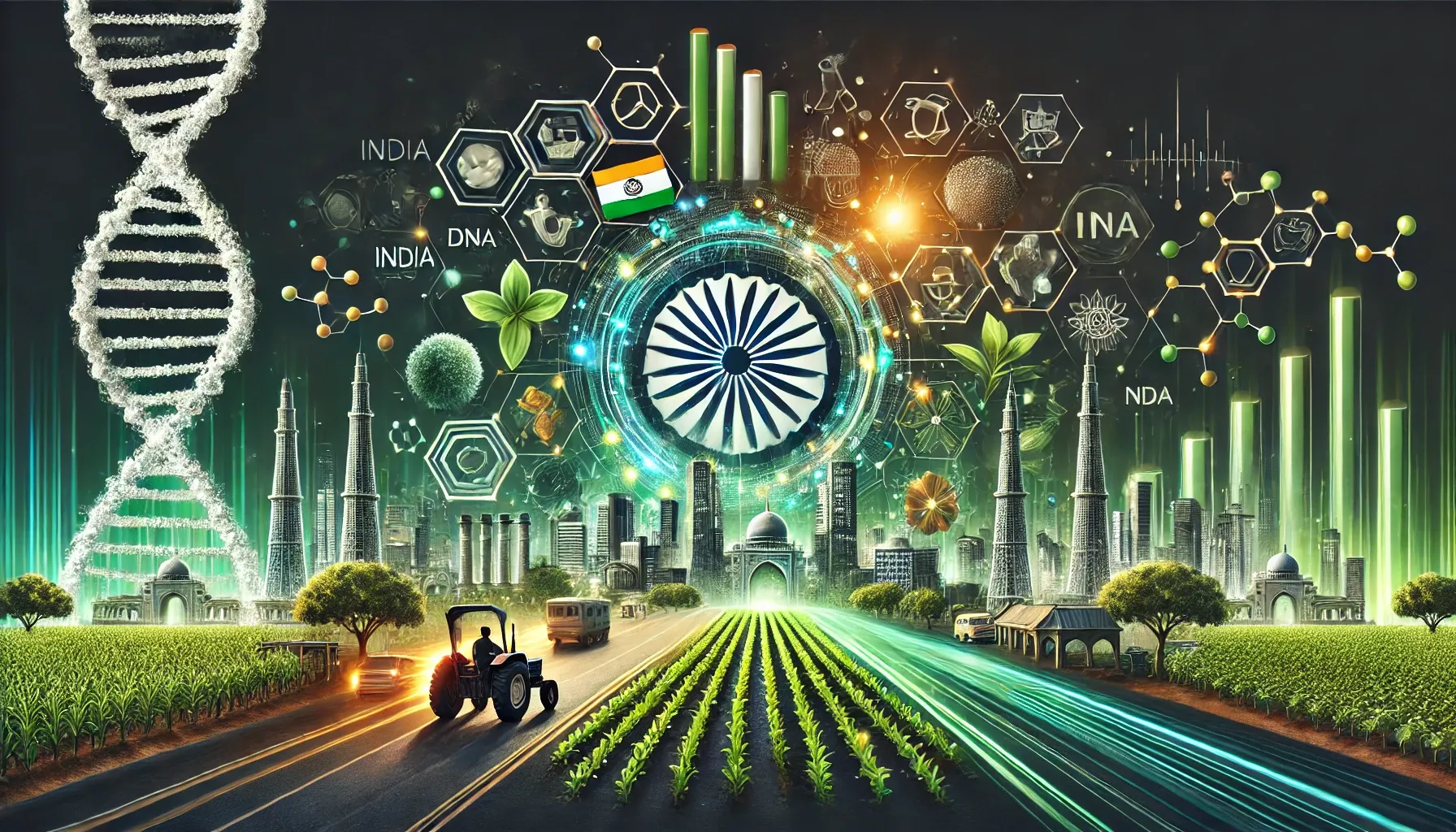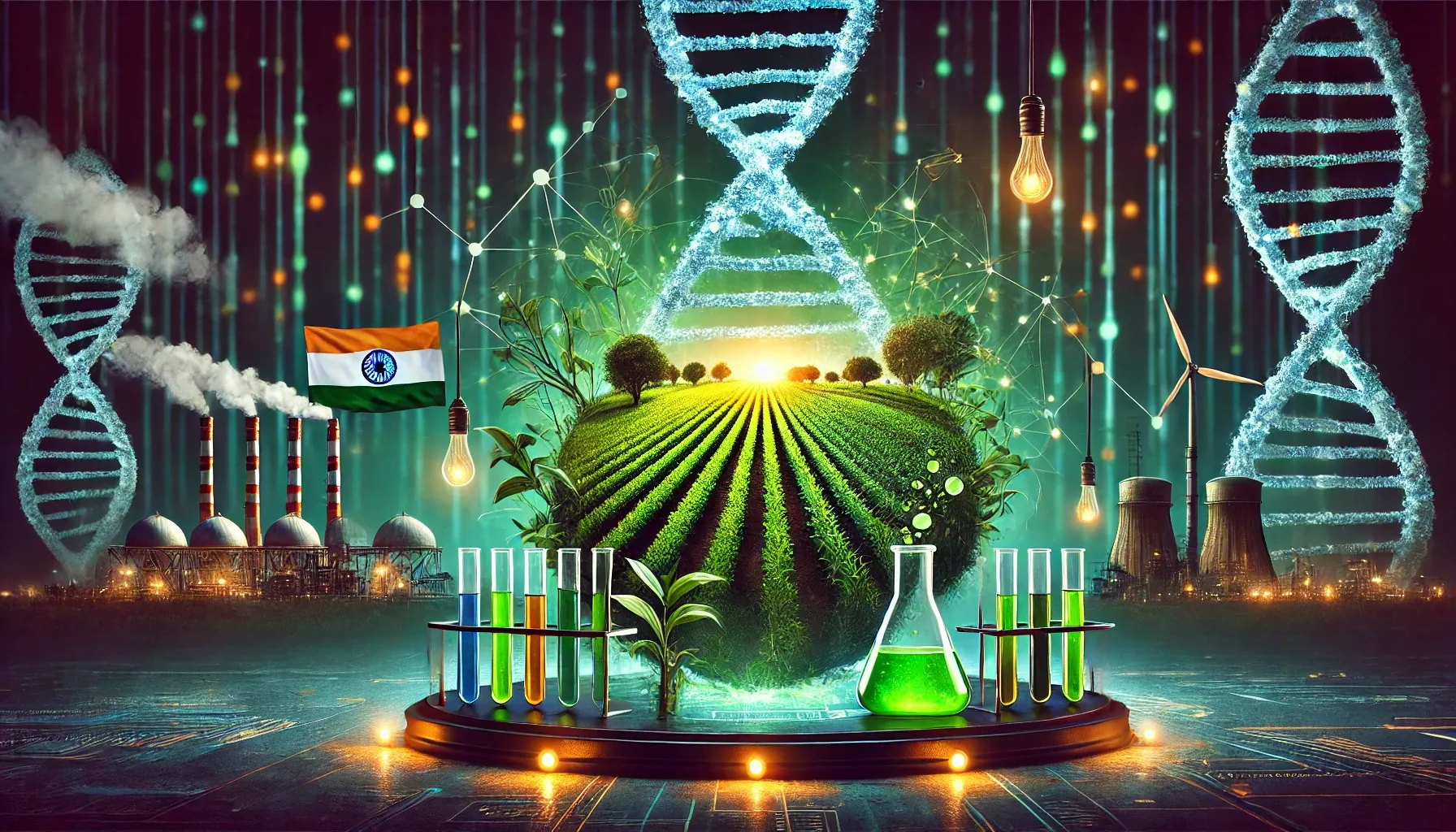UPSC
PIB
India’s Bioeconomy Surge: A Decade of Growth
Last Updated
27th March, 2025
Date Published
27th March, 2025
Share This Post With Someone

Context:
Published on March 27, 2025, by the Press Information Bureau under the Ministry of Science & Technology, this document highlights India’s bioeconomy leaping from $10 billion in 2014 to $165.7 billion in 2024. It details government initiatives, sectoral achievements, and future goals, aligning with sustainability and India@2047 vision, offering critical insights into biotechnology’s role in economic and environmental progress as of March 27, 2025.
Key Information Points:
- Growth Trajectory: India’s bioeconomy rose from $10 billion (2014) to $165.7 billion (2024), a 16-fold increase, targeting $300 billion by 2030.
- Economic Contribution: Contributes 4.25% to GDP with a 17.9% CAGR over the last four years.
- Global Ambition: Aims to make India a bio-manufacturing hub through innovation, sustainability, and inclusivity.
- Definition: Bioeconomy uses renewable biological resources for food, energy, and industrial goods, enhancing sustainability.
- Technological Drivers: Gene editing, bioprinting, and digital integration fuel progress.
- Vision: Focuses on R&D, skilled workforce, and commercialization for a $300 billion bioeconomy by 2030, supporting India@2047 goals.
- BioE3 Policy: Approved August 24, 2024, promotes regenerative biomanufacturing, circular economy, and net-zero goals.
- BioE3 Features: Includes biofoundry clusters, bio-AI hubs, job creation in tier-II/III cities, and global biosafety standards.
- National Biopharma Mission (NBM): $250 million initiative (50% World Bank-funded) supports 101 projects, 150+ organizations, and 30 MSMEs.
- NBM Achievements: Established 11 shared facilities (GCLP, GLP, cGMP), created 1,000+ jobs, including 304 scientists.
- Genome India: Sequencing 10,000 genomes to advance global healthcare strategies.
- Pharma Sector:
- Ranks 3rd globally in volume, 14th in value for pharmaceutical production.
- Developed world’s first DNA COVID-19 vaccine.
- Supplies 65% of global vaccines, aiding low/middle-income countries.
- Every third tablet consumed worldwide is Indian-made.
- Reducing API import dependency via “Make in India.”
- Developing indigenous HPV vaccine for cervical cancer prevention.
- Bio-agriculture:
- SAATVIK chickpea: Drought-tolerant, high-yielding variety approved.
- DEP1-edited MTU-1010 rice: Higher yields via gene editing.
- IndRA (90K SNP) and IndCA arrays: Enable DNA fingerprinting for rice and chickpea.
- Amaranth: Genomic database and 64K SNP chip for anti-obesity varieties.
- Biocontrol: Myrothecium verrucaria nano-formulation controls powdery mildew.
- Kisan-Kavach: Anti-pesticide suit enhances farmer safety.
- Biotech-KISAN:
- Empowers farmers, especially women, across 115 Aspirational Districts.
- 52 hubs in 15 agro-climatic zones with ICAR collaboration.
- Benefitted 3 lakh+ farmers, developed 200+ rural enterprises.
- State Impacts:
- Chhattisgarh: 40-50% income rise for 2,173 farmers.
- West Bengal: 37,552 farmers (28,756 women) trained, 14 FPOs formed.
- Madhya Pradesh: 67,630 farmers benefitted in 8 districts.
- Jharkhand: 69-100% increase in cocoon/compost production for 2,100 families.
- Meghalaya/Sikkim: 18-20% yield increase, 50% pest reduction.
- Bioenergy:
- Ethanol blending rose from 1.53% (2014) to 15% (2024), targeting 20% by 2025.
- Saved Rs. 99,014 crore in forex, cut 519 lakh metric tons CO₂, reduced oil imports by 173 lakh metric tons.
- Disbursed Rs. 1,45,930 crore to distillers, Rs. 87,558 crore to farmers.
- E100 fuel at 400+ outlets, E20 at 15,600+ stations.
- Uses maize, damaged rice, sugarcane byproducts, and 2nd-gen ethanol from Parali/bamboo.
- BIRAC Role: Since 2012, supports startups via 95 bioincubation centres.
- BIRAC Schemes:
- BIG: ₹50 lakh for 18 months, aided ~1,000 innovators.
- SEED Fund: ₹30 lakh equity for proof-of-concept.
- LEAP Fund: ₹100 lakh equity for commercialization.
- CARE - Amrit Challenge: Backed 89 digital health innovations (AI, ML, telemedicine).
- Future Outlook: Integrates biomanufacturing, bio-agriculture, and bioenergy for sustainability, resilience, and global leadership by 2047.
Key Terms:
- Bioeconomy: Use of renewable biological resources for sustainable production.
- BioE3 Policy: Framework for biomanufacturing, environmental sustainability, and jobs.
- National Biopharma Mission: Initiative to boost biopharma innovation and collaboration.
- Circular Economy: Model minimizing waste via resource reuse and regeneration.
- Ethanol Blending: Mixing ethanol with fuel to reduce emissions and oil dependency.
- BIRAC: Council fostering biotech startups through funding and infrastructure.
- Gene Editing: Technology altering DNA to improve crop yields or health outcomes.

UPSC
The Hindu Briefs